Rocketrip
B2B2C SaaS Product



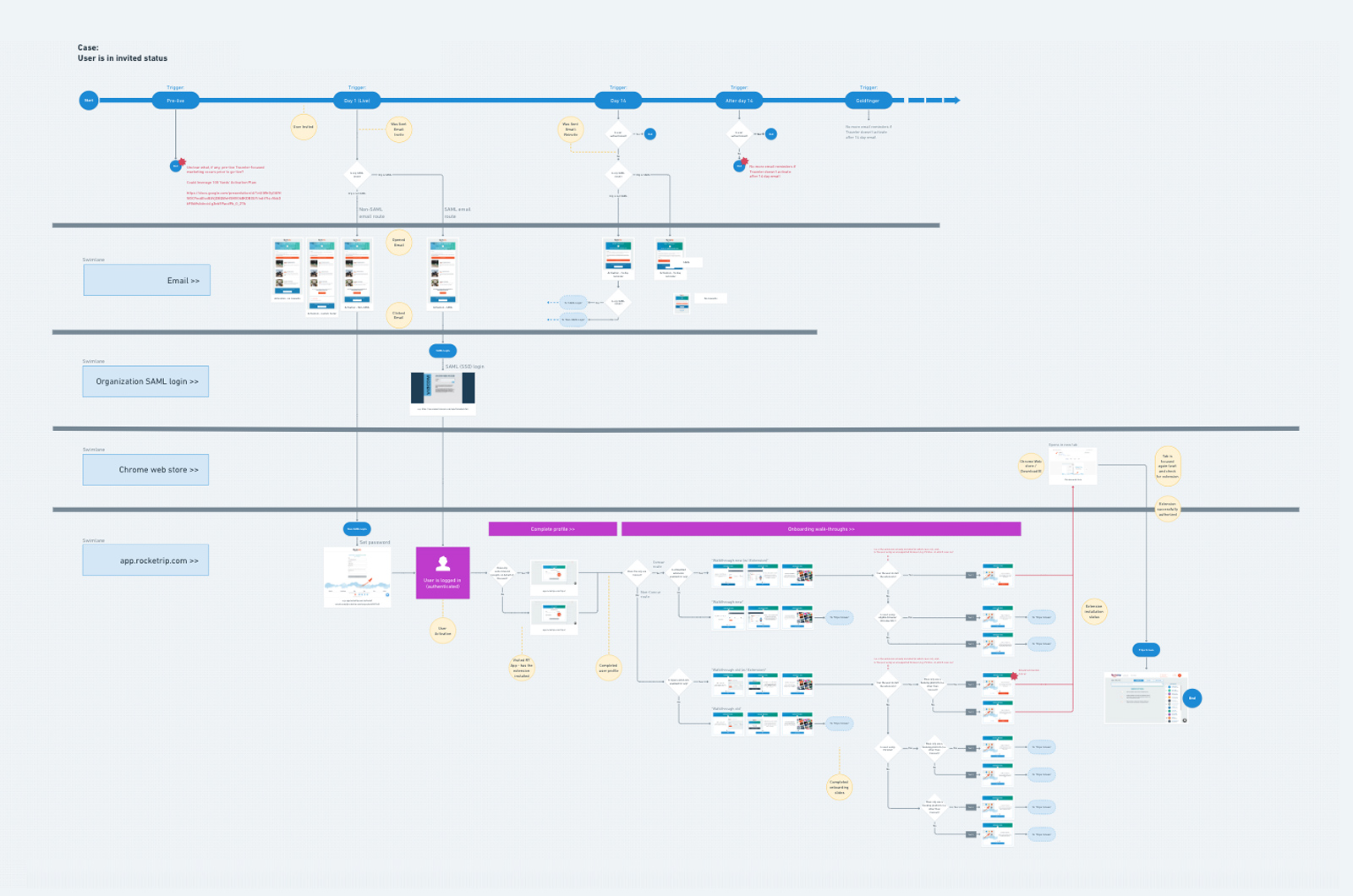
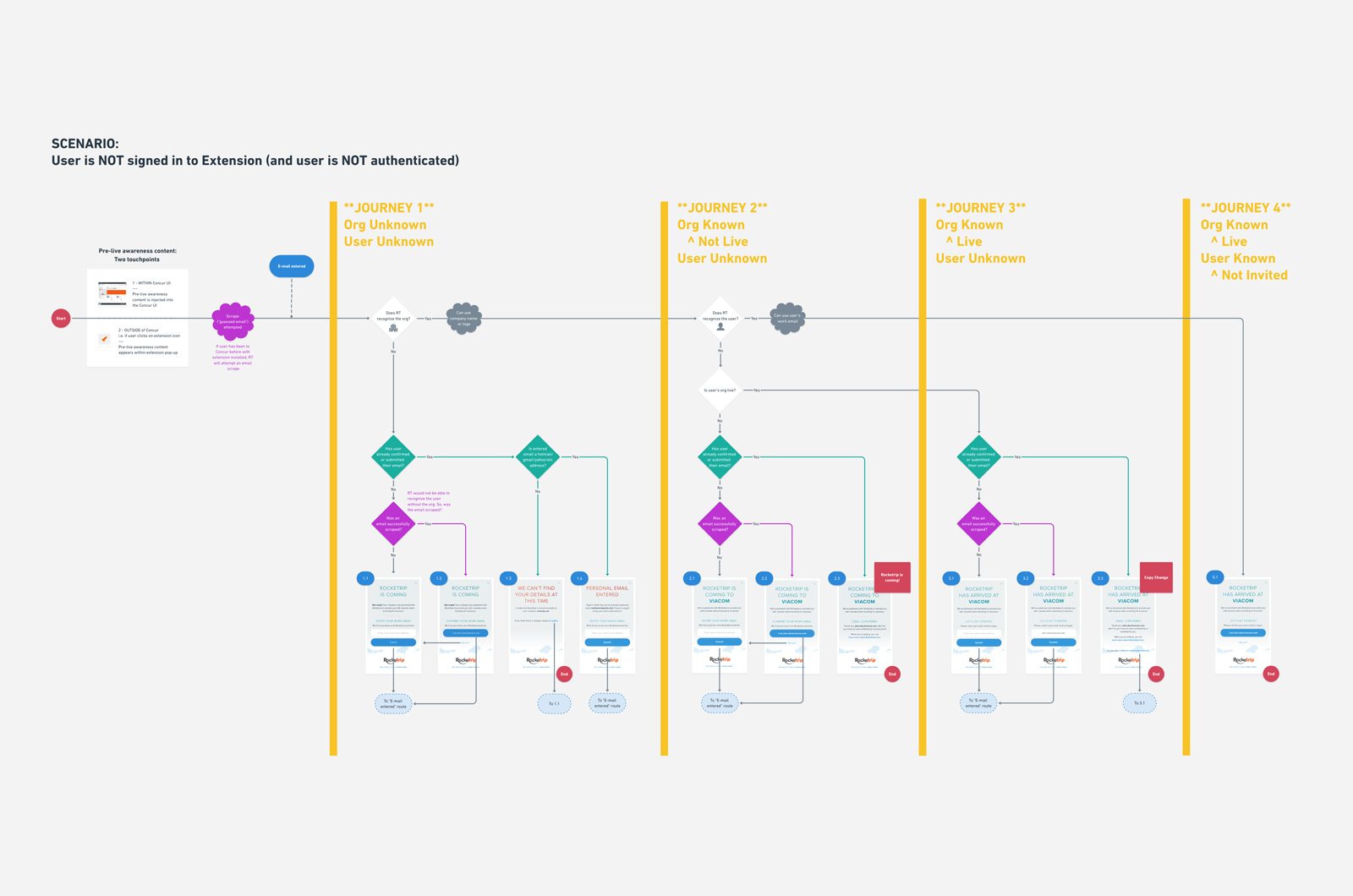





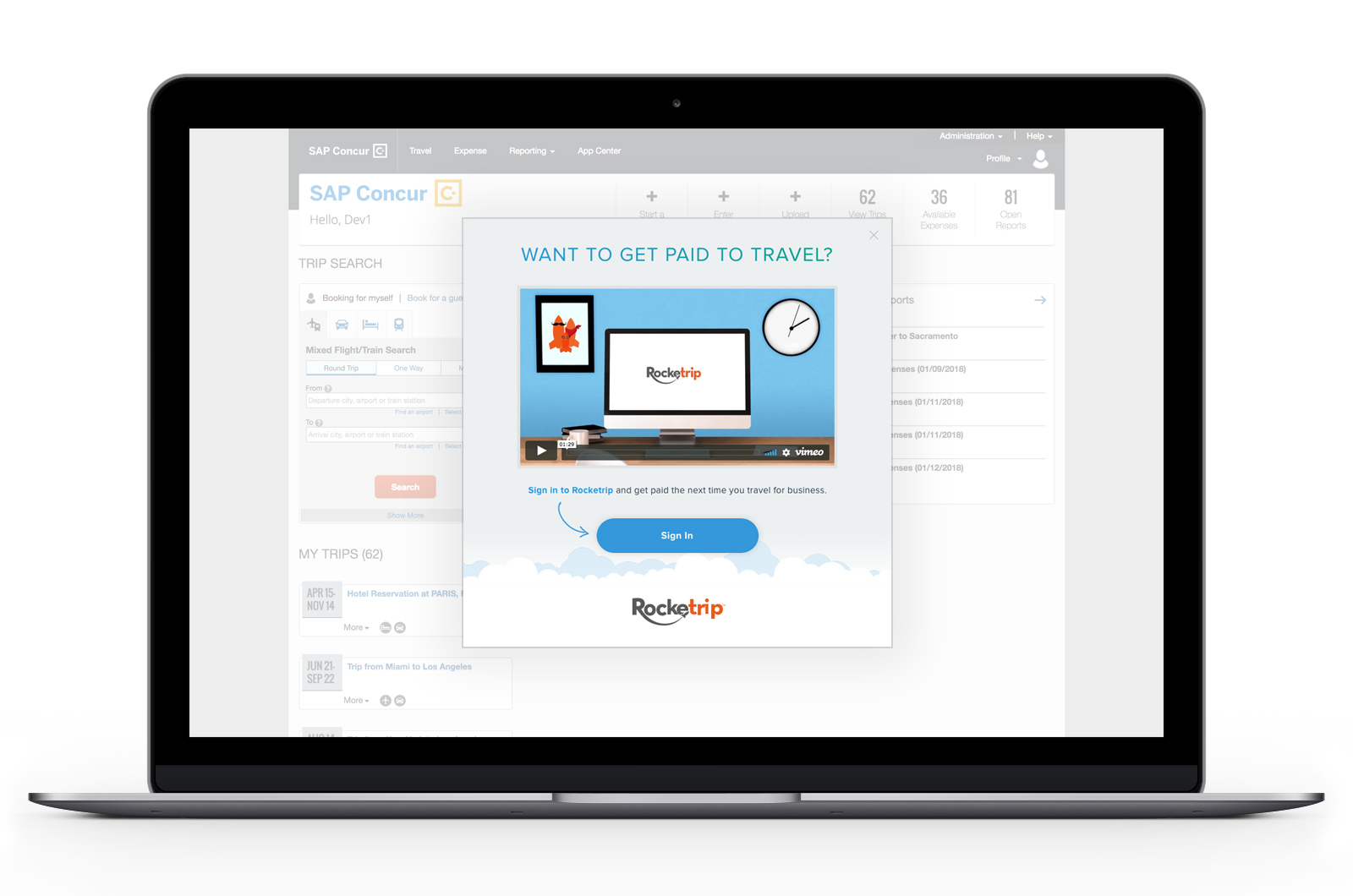
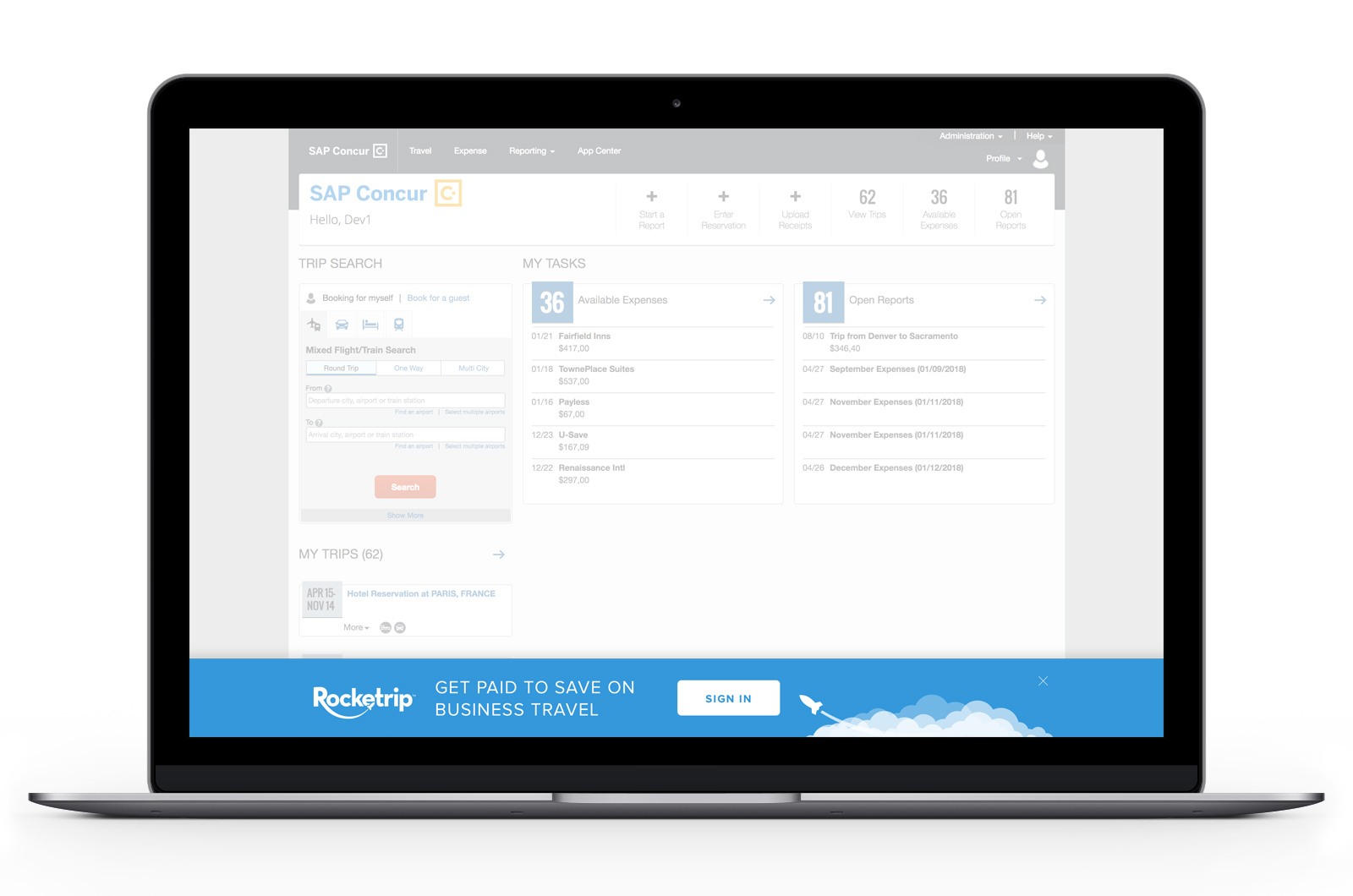
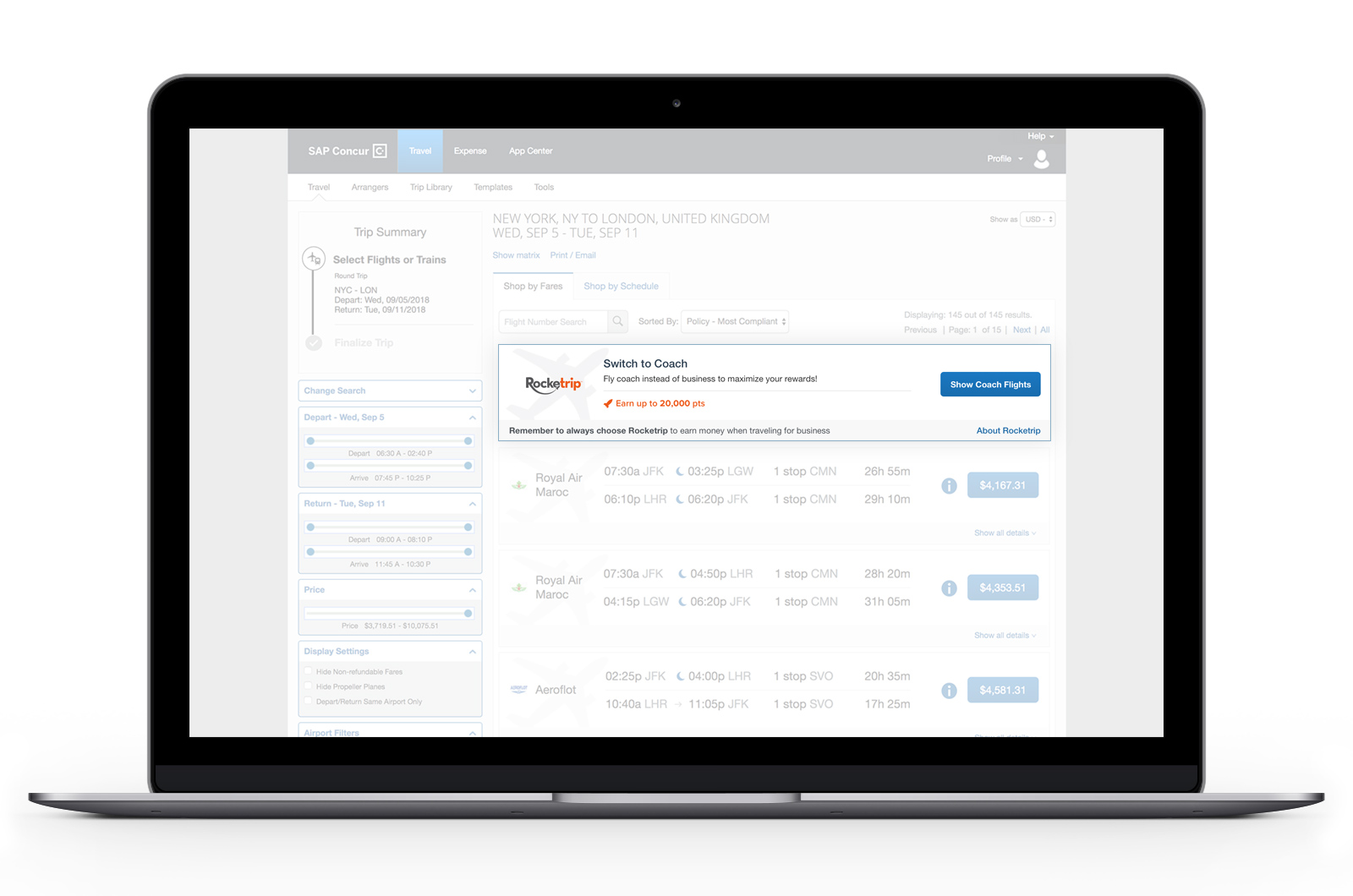
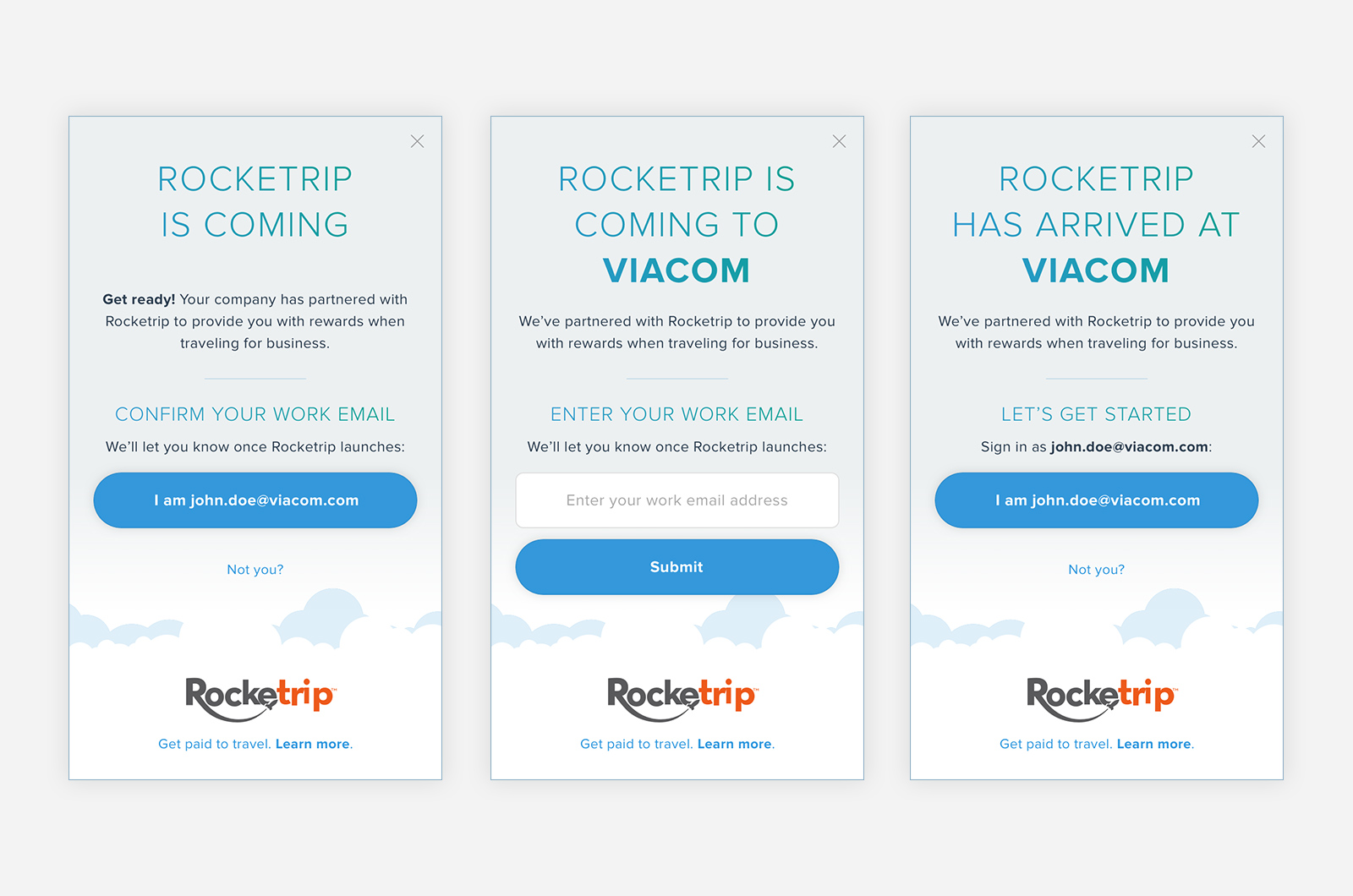

In 2018, I led the design that substantially increased adoption across Rocketrip’s platform
The challenge: As of June 2018, Rocketrip’s adoption numbers (known as Tier Utilization) were stuck at 34%. It was discovered that many prospective users were not signed in to the platform, nor were they generating a “Price to Beat”.
The Rocketrip “Price to Beat” is the incentivization tactic that is shown to users (travelers) when booking travel with Rocketrip installed. Read more here.
The objective: Improve platform adoption to 47% by increasing the number of users who have access to Rocketrip, who have signed in, and who have had a Rocketrip “Price to Beat” generated on first-use.
The solution: Employ a coordinated set of tactics to investigate, tackle, and measure platform updates targeted at improving three main areas of the adoption funnel: installation; activation; and first use.
The result:
A 73.5% increase in travelers adopting and using the Rocketrip platform (from 34% to 59%).
This result includes:
An 81.2% increase (6.4% > 11.6%) in users whose travel intent is unknown who sign in, and an estimated 220% increase (10% > 32%) in users whose travel intent is known who sign in, Read more >
A 97% end-user approval rating (plus a substantial reduction in customer support complaints) by eliminating confusion to do with the term “budget” (replaced with “Price to Beat”). Read more >
Incentivized 9.7% of users to re-book cheaper travel with Rocketrip. Read more >
Introduction to Rocketrip and Platform Adoption
Rocketrip is a behavioural incentivization platform aimed at enterprise business travelers. Rocketrip reaches travelers primarily through integrations with SAP’s online travel booking tool, Concur. This is achieved through the Rocketrip browser extension for Chrome and IE.
Rocketrip often saves employers hundreds of dollars for every trip booked. As an example, Feld Entertainment, on average, saved $289 per employe per trip, when using Rocketrip.
At Rocketrip, my squad and I were focused on platform adoption and first-time engagement. “Platform adoption” is defined by three intrinsically connected parts of the user funnel:
Various projects, experiments and updates were made to tackle and improve upon these three areas. Four of these projects are detailed below:
Increase % of Rocketrip extension installations
Project 1: “Extension Installation and Onboarding Flow”
The challenge: A partial extension installation (and onboarding) flow was created due to the switch towards OBT integration.
The solution: Fix routes in and out of onboarding; prioritize the extension installation; improve education using onboarding.
The result: New UIs created that replaced the partial flow creating a smoother user journey; new user onboarding created.
1: Whiteboarding the existing onboarding and extension installation flow at a high level.
2: Capturing pain-points / breakages and flow complexity in a more-detailed user flow.
3: The team workshopped hypotheses that would help to resolve issues with the flow.
4: Design work: extension installation 1.
5: Design work: extension installation 2.
6: Design work: extension installation 3.
7: Design work: UI feedback verifying the extension is being correctly installed.
8: Design work: onboarding flow part 1.
9: Design work: onboarding flow part 2.
Increase % of users signed in to extension
Project 2: “Streamline Extension Activations” (SEA)
The challenge: Over time, new ways of engaging with Rocketrip meant that sign-in/activation flow had become gradually disjointed and convoluted – resulting in fewer product activations.
The solution: Using a series of experiments, increase the % of users who successfully sign in to Rocketrip by streamlining the extension activation flow.
The result: An 81.2% increase in users signing in to the Rocketrip platform*.
*81.2% increase (6.4% > 11.6%; intent to travel unknown), 220% increase (estimated 10% > 32%; intend to travel known.
1: Design work for “sign in card” experiment variants. These were A/B tested.
2: Additional design work for “sign-in intercept’ experiments.
3: An example of an intercept experiment that’s designed to meet the user within Concur’s native search environment.
4: Due to the team’s experiments, Mixpanel data was telling us that extension activations had improved from a 6.4% baseline in June, to 10.85%, and then to 11.6% just two weeks later.
5: Interestingly, when measuring only those users who showed intent to travel (i.e. didn’t use Concur for other use cases like expense entry), we found an even steeper incline (from an estimate of 10% to ~32%).
6: In an effort to further increase extension activations, the team ran a series of remote observational studies (screen-shares) with users to investigate signals that may help us further increase activation numbers.
7: LEARNING — Through the observations, it was discovered that a couple of customers had misconfigured SSO settings preventing activations using the default method (auto-authentication within a modal popup window). Rocketrip’s Tech Services team were able to find and fix the issue.
8: LEARNING — It was also found that, due to slow load speeds of the activation popup, people would exit out of the popup before it fully loaded (therefore bypassing the auto-authentication trigger). This resulted in the team focusing efforts on optimizing page/asset load-speeds.
9: Additionally, it was felt that users lacked a strong understanding of the value of Rocketrip; we began including efforts to enhance understanding upstream that’d help to improve conversation rates downstream.
Increase % of first-time Rocketrip users
Project 3: “Reduce Budget Confusion”
The challenge: The term “Budget” was triggering confusion with both end-users and customers as it was easily-misassociated as being part of the customer’s strict internal travel policy.
The solution: The Rocketrip “Budget”, a 3-year-long key brand pillar of the Rocketrip platform, was rebranded “Price to Beat” across 10+ end-user facing touchpoints.
The result: A substantial reduction in questions and complaints funneled through customer support and, upon surveying, a 97% end-user approval rating.
1: Initial audit results determined the amount of “budget” complaints/sentiment, through customer support, NPS and other end-user feedback channels.
2: Eight end-users (who had each previously left feedback) were interviewed for just 15-20 minutes each.
3: Research findings. The key finding was that Rocketrip’s “budget” was meant to be used only for incentivization (i.e. the “carrot”). Instead it was being used as the “stick” (users felt obligated they had to come in under the Rocketrip’s budget).
4: These learnings were presented back to the Rocketrip company.
5: To help re-educate users on the value of Rocketrip, users were surveyed to find a more-fitting replacement term. “Price to Beat” won.
6: Additionally, the team also measured whether users understood that “Price to Beat” was something people should “come in under” (the intent) vs “trying to reach”.
7: After 3 years, “Budget” was replaced with “Price to Beat” across more than 10 end-user facing touchpoints.
8: Internal and external communications were sent to Rocketrip team members, customers and end-users.
9: “Price to Beat” feedback from both customer support team members as well as end-users (measured within Intercom) was very encouraging.
“Price to Beat” press cuttings
Project 4: “Post-Booking Intervention Pilot”
The challenge: Incentivizing behavior change for new users was limited to searching for travel flow only. We wanted to test new approaches to alter travel behaviour within other distinct parts of the journey.
The solution: Incentivize positive behavior by two means: 1) highlight new travel options post-search selection, and 2) a “post-booking intervention” email sent to travelers once travel had been booked.
The result: Initial testing showed that the team’s “post-booking intervention” efforts incentivized 9.7% of users to begin re-booking cheaper travel thanks to Rocketrip.
1: An example Rocketrip email incentivizing behavioral change by promoting the user to rebook expensive hotel options with cheaper alternatives in exchange for Rocketrip points.
2: Another variation of post-booking intervention: a “Business to Coach” card was displayed within Concur’s post-search page asking users to downgrade their flight status in exchange for Rocketrip points.
3: Nearly 10% of new users who saw the “Business to Coach” flight card engaged with Rocketrip for the first time by starting the journey to rebook their flights!





